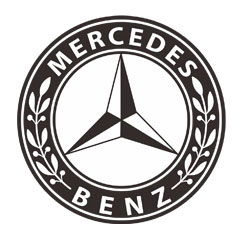
Bouwjaren
- 1955 Mercedes Benz 190SL
- 1956 Mercedes Benz 190SL
- 1957 Mercedes Benz 190SL
- 1958 Mercedes Benz 190SL
- 1958 Mercedes Benz 220SE Ponton
- 1959 Mercedes Benz 190SL
- 1959 Mercedes Benz 220SE Ponton
- 1960 Mercedes Benz 190SL
- 1960 Mercedes Benz 220SE Ponton
- 1960 Mercedes Benz 220SE Cabriolet
- 1961 Mercedes Benz 190SL
- 1961 Mercedes Benz 220SE
- 1962 Mercedes Benz 190SL
- 1962 Mercedes Benz 220SE W111
- 1962 Mercedes Benz 220SEb Cabriolet
- 1963 Mercedes Benz 190SL
- 1963 Mercedes Benz 230SL
- 1963 Mercedes Benz 220SE 111
- 1963 Mercedes Benz 220SEb Cabriolet
- 1964 Mercedes Benz 230SL
- 1964 Mercedes Benz 220SE 111
- 1964 Mercedes Benz 220SEb Cabriolet
- 1965 Mercedes Benz 230SL
- 1966 Mercedes Benz 230SL
- 1967 Mercedes Benz 230SL
- 1967 Mercedes Benz 250SL
- 1968 Mercedes Benz 250SL
- 1968 Mercedes Benz 280SL
- 1969 Mercedes Benz 280SL
- 1970 Mercedes Benz 280SL
- 1971 Mercedes Benz 280SL
1968 Mercedes Benz 250SL
The Mercedes Benz 250SL is often considered a 1967 one year only model; however, there were a handful of models built in 1966 and 1968. The Mercedes Benz 250SL 1968 saw only 2 units produced and many were sold in, and titled as 1968 year model cars. In total, 5196 units came off the production floor in Germany with 5177 units being the 1967 model. The 1968 Mercedes 250 SL, as well as the 1966 and 1967 models, marked the start of another innovation in the Mercedes Benz brand. Although the SL line was originally supplied with two disk brakes and two drum brakes, starting with the 250 SL forward, the cars have disk brakes all around. Later models were also available with modern features such as power steering, 4-speed automatic transmissions, power assisted brakes and air conditioning.
Looking to purchase a Classic Mercedes?
ER Classics have compiled a few tips to help you in your search. Firstly, it is important to remember that these cars are over 3 decades old; they will show signs of maintenance and repair. Secondly, many of the Mercedes Benz 250SL 1968 models were originally purchased as daily drivers, and they were driven! It is rare that you will find an unaltered, unrepaired SL, however, just because a car has been repaired does not mean it’s a bad car. They key is to look for a quality restoration or for the most complete car you can afford. Of course, as with any classic car, you will also want to ensure the chassis number and engine number match. This can be a strong indicator in the quality of any repairs that have been done. Lastly, the 1968 Mercedes 250SL is highly prone to rust. Be sure to put the car up on a lift and check areas such as the trunk floors, the inner wheelbase panels, the rear body panel that holds the taillights, and the front cross member that the front bumper bolts to, to name a few areas.





















 sales: +31641269957
sales: +31641269957



